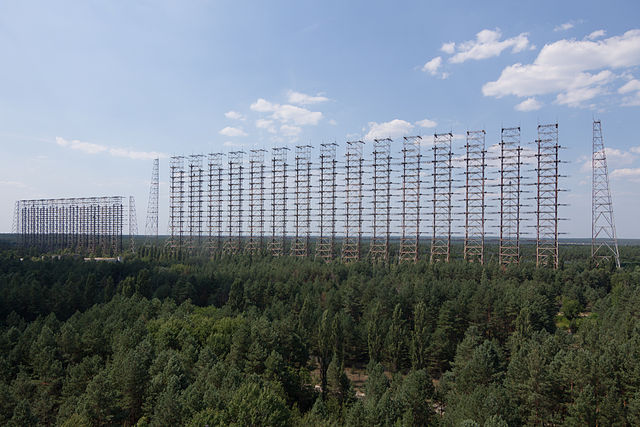Over-the-horizon radar (OTH), sometimes called beyond the horizon radar (BTH), is a type of radar system with the ability to detect targets at very long ranges, typically hundreds to thousands of kilometres, beyond the radar horizon, which is the distance limit for ordinary radar. Several OTH radar systems were deployed starting in the 1950s and 1960s as part of early-warning radar systems, but airborne early warning systems have generally replaced these. OTH radars have recently been making a comeback, as the need for accurate long-range tracking has become less important since the ending of the Cold War, and less-expensive ground-based radars are once again being considered for roles such as maritime reconnaissance and drug enforcement.

How a skywave OTH radar works: A powerful shortwave signal from a large transmitting antenna (left) reaches a target beyond the horizon by refracting off the ionosphere, and the echo signal from the target (right) returns to the receiving antenna by the same route. In practice, the beams are much closer to the horizon than shown here.
Duga radar array, near Chernobyl
Coverage of the three U.S. Navy ROTHR stations in Texas, Virginia, and Puerto Rico
Transmitter array, Sector 6, Christmas Valley, Oregon
An ionosonde, or chirpsounder, is a special radar for the examination of the ionosphere. The basic ionosonde technology was invented in 1925 by Gregory Breit and Merle A. Tuve and further developed in the late 1920s by a number of prominent physicists, including Edward Victor Appleton. The term ionosphere and hence, the etymology of its derivatives, was proposed by Robert Watson-Watt.
An example of an ionosonde system displaying an ionogram





